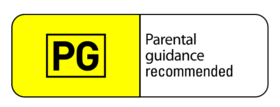Australian Classification Board facts for kids
The Australian Classification Board (ACB or CB) is an Australian government statutory body responsible for the classification and censorship of films, video games and publications for exhibition, sale or hire in Australia. The ACB was established in 1970 and was once part of the Office of Film and Literature Classification (OFLC), which was dissolved in 2006. The Department of Communications and the Arts provided administrative support to the ACB from 2006 until 2020, when it was merged into the 'mega department' of the Department of Infrastructure, Transport, Regional Development and Communications. Decisions made by the ACB may be reviewed by the Australian Classification Review Board. The ACB now operates under the Commonwealth Classification Act 1995. The ACB is made up of a director, a deputy director, and three other board members, appointed by the government for three- or four-year terms, and temporary board members. The ACB is located in Sydney.
The ACB does not directly censor material by ordering cuts or changes. However, it is able to effectively censor media by refusing classification and making the media illegal for hire, exhibition and importation to Australia.
The classification system has several levels of "restricted" categories, prohibiting sale, exhibition or use of some materials to those who are under a prescribed age. In 2005, video and computer games became subject to the same classification ratings and restrictions as films (with the exception of the R 18+ and X 18+ ratings), in response to confusion by parents. Despite a line in the National Classification Code stating that "adults should be able to read, hear and see what they want", the adult R 18+ classification was not applied to video games in Australia until 1 January 2013.
Some films (those made for educational or training purposes, for instance) are exempt from classification under certain conditions. Film festivals and institutions such as Australian Centre for the Moving Image (ACMI) may apply to the ACB for an exemption from classification for the purpose of screening at a particular film festival or event. If the ACB believes an unclassified work, in their estimation, would receive an X 18+ classification if it were to be classified they would not grant an exemption for public screening, as an X 18+ cannot be exhibited. The ACB may require film festivals to have age-restricted entrance to a festival or screening.
Contents
History
The Australian Classification Board was created in 1970 to classify or rate all films (and later in 1994, video games) that came into Australia. In the early years of the system, beginning in November 1971, there were four ratings.
- G for " general audiences"
- PG for "parental guidance suggested for under 15"
- M for "suggested for 13 and over" (later became M 15+ from the late 1980s until 2005)
- R for "restricted exhibition" (previously SOA or "suitable only for adults". This later became R 18+ in the late 1980s)
The MA 15+ rating was introduced in 1993, to flag content that was too strong for the M classification, but not so much so that the content should be restricted only to persons over the age of 18.
The Office of Film and Literature Classification (OFLC) was reorganised in 1994, and oversaw the ACB. In 2005 the OFLC was dissolved and supervision of the ACB transferred to the attorney-general's department.
The current colour-coded classification markings for films and computer games were introduced in May 2005.
In August 2014, the ACB introduced amendments to allow for the automated classification process employed by the International Age Rating Coalition. This new process reduces the costs of video game developers as they seek to obtain ratings for their products that are distributed digitally online.
Overview
The board operates on a procedure that primarily involves decision-making. The members must communicate their views clearly and appreciate the views of others. Board members would be exposed to a wide range of material, including content that is confronting and offensive. Every film and computer game has to be classified before it can be legally made available to the public. Some publications also need to be classified. Failure to give classification (especially for unclassified material that is likely to be classified RC) is an implicit ban (except for exempt films, games, and publications). It is an offence "to display, demonstrate, sell, hire, publicly exhibit or advertise a film or computer game" without having it classified. Some films and documentaries (such as current affairs and those created for business, scientific and education purposes) are exempt from classification unless, if classified, they would be M or above.
There are legal age restrictions for the ratings of MA 15+ and R 18+. X 18+ is a special restriction rating for adult content. The other classification categories (G, PG and M) are merely recommendations and they are not submitted to legal age restrictions. RC (banned) material cannot be sold, hired or distributed to any persons. A film or video game's context is crucial in determining whether a classifiable element is justified by the story-line or themes.
The ACB decides what consumer advice accompanies each classification. They indicate the elements in films and computer games which caused the classification and help consumers make choices about what they read, view or play. There are six classifiable elements for films: themes (racism, etc.), violence (the level of violence and how threatening it is in its context), language (the level of coarse language). Consumer advice appears with the classification symbol on products, packaging and in advertisements. Consumer advice is not given if the element in question would be acceptable at a lower classification. By August 2020, the ACB added another category for video games related to microtransactions, with any game including them listing in-game purchases alongside these other themes.
The ACB also classifies material submitted by the police, the Australian Customs and Border Protection Service and the Australian Communications and Media Authority. The board does not classify live performances, audio CDs and television shows. Television is regulated by the Australian Communications and Media Authority. Film classification also normally applies to Internet streaming services. In January 2019, for the first time, Netflix was given the go-ahead to self-regulate film and television classification on its streaming platform, allowing the company to rank content between G and R 18+.
Film and video game classifications
Unrestricted/Advisory
The classifications below are unrestricted and may suggest parental advisory, but do not otherwise impose any legal restrictions on access to or distribution of material.
Restricted
By contrast, the classifications below are legally restricted, as explicitly indicated by the black banner at the bottom of the classification label. It is illegal to sell or exhibit material with these classifications to anyone younger than the stated minimum age.
Other labels
| Classification | Description |
|---|---|
 Refused Classification (RC) |
Contains material that, while being, in most cases, legal to possess, is considered offensive to the standards of morality, decency and propriety generally accepted by a "reasonable adult" to such an extent that it should not be classified. In Australia, all films and video games must be classified by law, and works that are refused classification by the ACB are legally banned from sale, hire or public exhibition, carrying a maximum fine of $687,500 and/or 10 years imprisonment if an individual or organisation is found to be in breach of this. It is, however, legal to possess RC films and games for people over 18, except in Western Australia and prescribed areas of the Northern Territory and/or if they contain illegal content. The content is very high in impact.
|
  Check the Classification (CTC) |
The content has been assessed and approved for advertising unclassified films and computer games. "This film has advertising approval. Check the classification closer to the released date" is usually written on the marking.
|
Literature ratings
Publications such as books and magazines (though they would also include other printed media such as calendars, cards and catalogues) are required to be classified if they contain depictions or descriptions of violence that are unsuitable for a minor or an adult who would take offence if sold as an unrestricted publication.
| Classification | Description |
|---|---|
 Unrestricted |
These publications have no legal restrictions and are therefore available to persons of all ages, although content may or may not be suitable for readers under 15 years. |
 Category 1 Restricted (CAT 1) |
These publications are not available to persons under 18 years. They must be distributed in a sealed wrapper. Their covers must be suitable for public display. |
 Category 2 Restricted (CAT 2) |
Just like Category 1 Restricted restricted publications, they are not available to persons under 18 years. No publications that are likely to be classified Category 2 Restricted may be displayed in any public registered event. |
 Refused Classification (RC) |
RC publications are banned and cannot be sold or displayed anywhere in Australia.
The restricted publications are for adults and they are not to be sold to people under 18 (and in Queensland under state law). They have content that could offend some sections of the adult community. The restricted categories are subject to various restrictions in different states; for example, one or both categories may only be sold in adults-only premises in certain states. For this reason, some adult magazines are published in two editions in Australia, or just one edited edition which can be sold anywhere with a warning, as unrestricted mature. |
Proposals
New rating category
In February 2020, the board had suggested the adoption of a PG-13-type classification category, which is a rating aimed at young teens (between PG and M), that addresses the mild+ impact level material. Its adoption was suggested because many films in recent years surpass what conforms to the PG rating and are, consequentially, pushed up into an M ("moderate impact") rating category due to their dark themes and peril, despite being films aimed at younger teens. The mild+ category, if introduced, could excel the mild impact level (PG), but not so as to require a mature perspective (M classification) and it could be relevant for films with a more significant amount of action or fantasy violence. If the rating is implemented, the non-restricted classifications would read like this:
- G – General (very mild impact)
- PG – Parental guidance (mild impact)
- Young person (mild+ impact)
- M – Mature (moderate impact)
This would mean the age restrictive numbers (15 and 18) would only be present for the legally-restricted categories of MA 15+, R 18+ and X 18+. The ACB is not suggesting that the new PG-13 rating would be applied retrospectively, but rather prospectively, as was the case when the MA 15+ category was initiated and when the R 18+ was adopted for video games. The ACB is also not planning to use the PG-13 title for the new classification category, but a title that does not reference any age, such as YP for "young person" (or, likely, T for "teenager").
Literature classification
The ACB considers the present classification categories for publications to be redundant, complex, and inappropriate for the digital world. Therefore, the board has proposed the creation of the equivalent film and games classifications of M, R 18+ and X 18+ for publications, like:
- Unrestricted publication classification – M
- Category 1 Restricted publication classification – R 18+
- Category 2 Restricted publication classification – X 18+
See also
 In Spanish: Junta de Clasificación Australiana para niños
In Spanish: Junta de Clasificación Australiana para niños
- Censorship in Australia
- Internet censorship in Australia
- Australian Commercial Television Code of Practice – includes the rating system of Australian TV
- Video game controversy – includes the history of games censorship in Australia
- List of banned video games in Australia
- Australian Commercial Television Code of Practice














